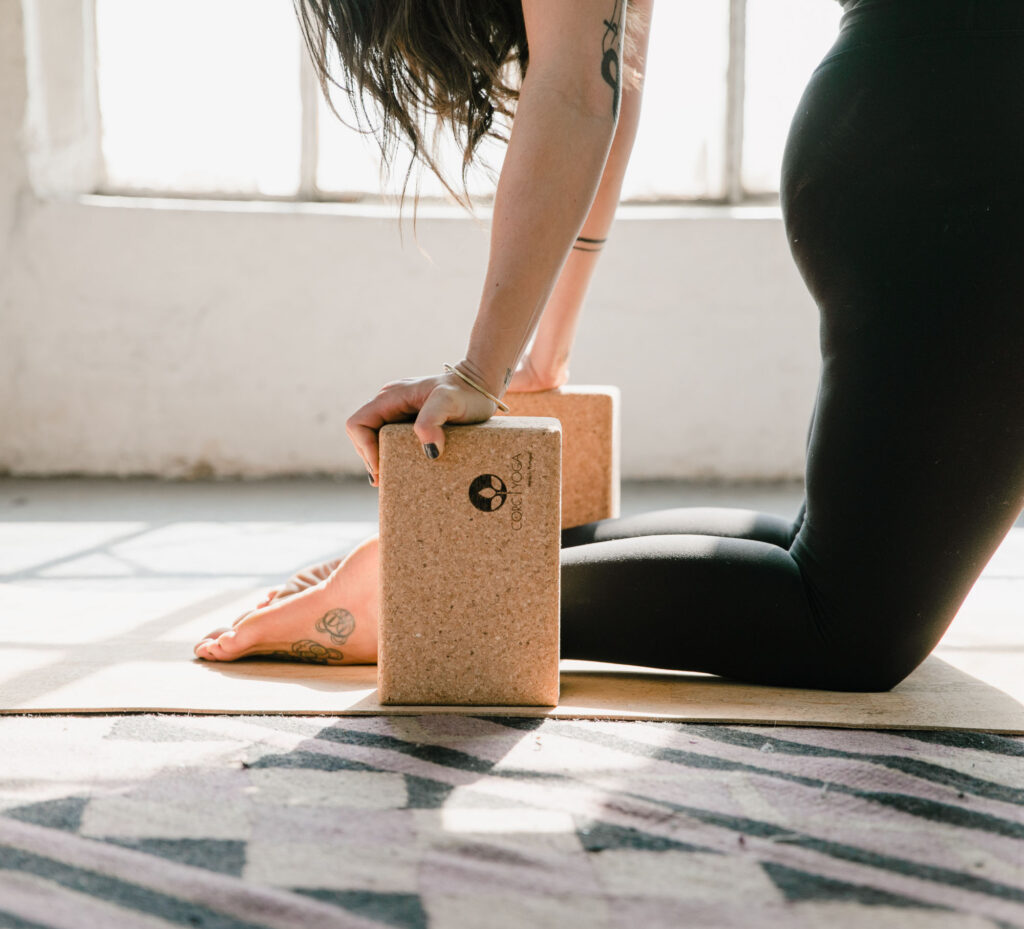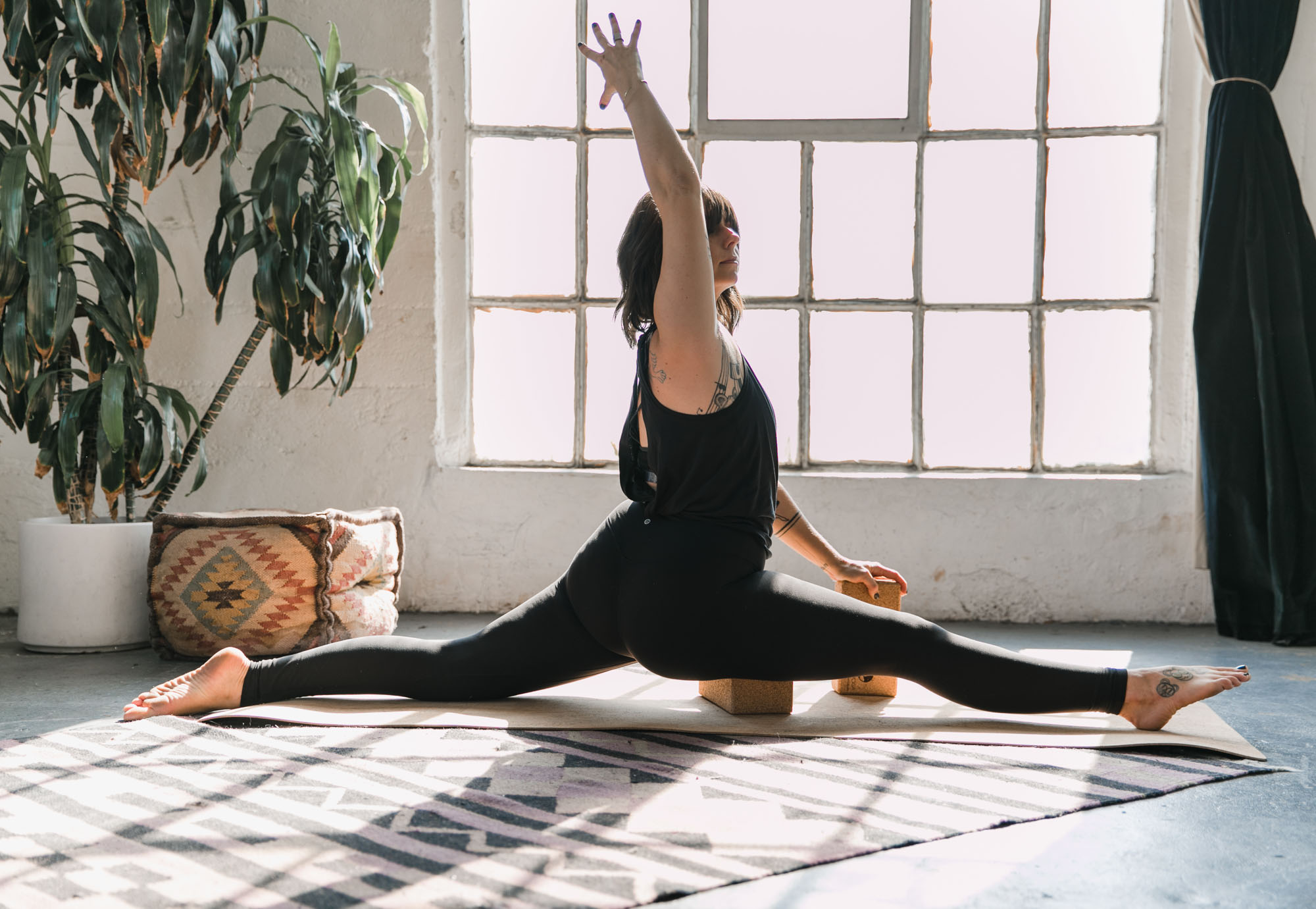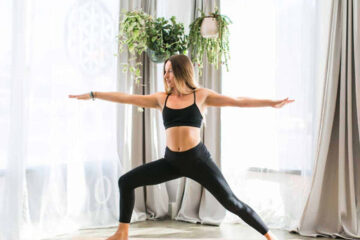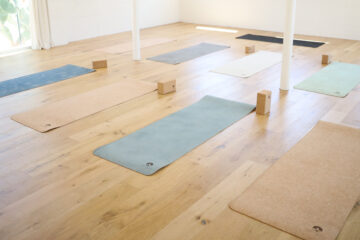Yoga blocks are useful for both beginners and people who are advanced in their yoga practice. They help beginners maintain stability and overcome the limits of their inflexibility. And for advanced users, a yoga block acts as a support to assist with deeper stretches.
What is a yoga block
The yoga block is a prop you can use in your practice. They are rectangular in shape, resembling a brick, and come in a variety of sizes. Corc Yoga offers two different sizes: 3.5” x 5” x 9” and 4″ x 6″ x 9″.
Each size provides three different heights, so you can adjust the block height to match your comfort.
Yoga blocks can be made from a variety of materials, but most people would agree that cork yoga blocks often last longer. Cork is also an antimicrobial that naturally kills bacteria.
Purpose of the yoga block
Your initial thought might be that yoga blocks (and props in general) are for inexperienced users. But yoga blocks can be beneficial for both the experienced user and those just beginning to practice yoga. A yoga block can help you move into a deeper stretch without the potential strain you could possibly experience. It will also provide your body with stability and support while practicing more difficult poses.
If you’re just starting out, blocks will help you adjust as you move into the pose by accommodating your level of flexibility. They are most often used for standing poses like Ardha and Chandrasana where one of your hands is on the ground. Yoga blocks can be placed under your hands, feet, or bottom to help you get the most out of stretches. They also allow you to get into the correct position while protecting your body.
Added benefits of the yoga block
There are five added benefits of using yoga blocks that any experience level can appreciate.
1. They help you hold the pose longer and more comfortably.
2. They reduce the distance between the ground and your body.
3. They help modify some poses for those who aren’t as flexible.
4. They prevent the chances of pulling a muscle or causing strain.
5. They can decrease the amount of energy required to get into a position.
5 ways to incorporate yoga blocks into your practice
Now that you know the purpose and benefits of yoga blocks, here are 5 ways you can use them in your yoga practice:
1. Child’s Pose (Balasana)
Begin on the floor in a tabletop position. Place the blocks shoulder-distance apart at the top of your mat. Bring your toes together to touch then take your knees out wide. Move your hips back onto your heels and walk your hands forward to lower your chest. Place your hands on the blocks and let your forehead rest down.
2. Reclining Bound Angle Pose (Supta Baddha Konasana)
Lie on your back with your arms to your sides, palms facing up, and the soles of your feet together with bent knees. Allow your knees to open to the sides towards the floor. Place the blocks on the floor just above the knee underneath the thighs.
3. Hero’s Pose (Virasana)
Kneel down with your knees and feet hip-distance apart and place the block between your shins. Shift your body back until you are seated on the block, lengthen the spine and gently draw the navel in, and rest the palms on the thighs.
4. Standing Forward Bend (Uttanasana)
Stand with your feet hip-distance apart with the blocks in front of the feet (you can also place them just outside the feet) at any height. Bend in the knees softly and fold forward reaching the hands to the blocks.
5. Triangle Pose (Trikonasan)
Stand with your feet wide, point your right toes in and turn your left foot to a 90-degree angle. Place the block just outside of your right foot at a medium or high setting. Stand tall and extend your arms out long and lengthen your fingertips. Draw your navel in and engage the upper legs. With a long spine, reach your right hand forward and shift your hips back, and take your arms with you reaching to 12 and 6 o’clock. Place your right hand on the block while maintaining a straight spine.







